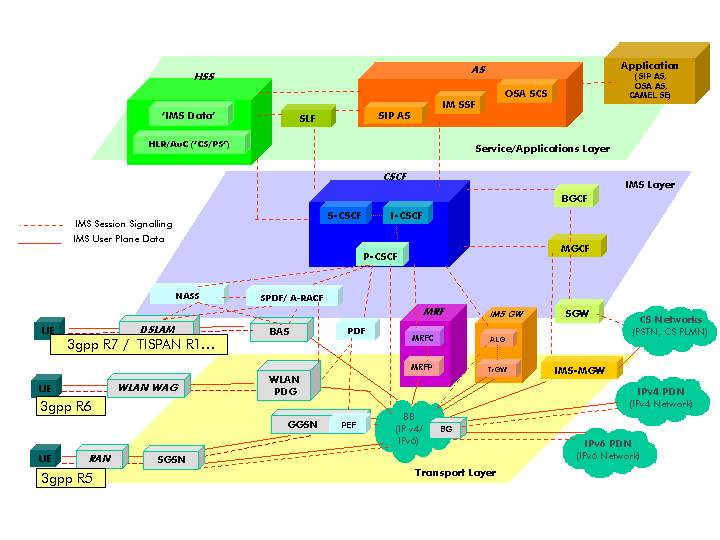This article has multiple issues. Please help improve it or discuss these issues on the talk page . (Learn how and when to remove these messages)
|
The IP Multimedia Subsystem or IP Multimedia Core Network Subsystem (IMS) is a standardised architectural framework for delivering IP multimedia services. Historically, mobile phones have provided voice call services over a circuit-switched-style network, rather than strictly over an IP packet-switched network. Various voice over IP technologies are available on smartphones; IMS provides a standard protocol across vendors.
Contents
- History
- Architecture
- Access network
- Core network
- NGN interconnection
- Charging
- IMS-based PES architecture
- Interfaces description
- Session handling
- Initial filter criteria
- Security aspects of early IMS and non-3GPP systems
- See also
- References
- Further reading
- External links
IMS was originally designed by the wireless standards body 3rd Generation Partnership Project (3GPP), as a part of the vision for evolving mobile networks beyond GSM. Its original formulation (3GPP Rel-5) represented an approach for delivering Internet services over GPRS. This vision was later updated by 3GPP, 3GPP2 and ETSI TISPAN by requiring support of networks other than GPRS, such as Wireless LAN, CDMA2000 and fixed lines.
IMS uses IETF protocols wherever possible, e.g., the Session Initiation Protocol (SIP). According to the 3GPP, IMS is not intended to standardize applications, but rather to aid the access of multimedia and voice applications from wireless and wireline terminals, i.e., to create a form of fixed-mobile convergence (FMC). [1] This is done by having a horizontal control layer that isolates the access network from the service layer. From a logical architecture perspective, services need not have their own control functions, as the control layer is a common horizontal layer. However, in implementation this does not necessarily map into greater reduced cost and complexity.
Alternative and overlapping technologies for access and provisioning of services across wired and wireless networks include combinations of Generic Access Network, softswitches and "naked" SIP.
Since it is becoming increasingly easier to access content and contacts using mechanisms outside the control of traditional wireless/fixed operators, the interest of IMS is being challenged. [2]
Examples of global standards based on IMS are MMTel which is the basis for Voice over LTE (VoLTE), Wi-Fi Calling (VoWIFI), Video over LTE (ViLTE), SMS/MMS over WiFi and LTE, Unstructured Supplementary Service Data (USSD) over LTE, and Rich Communication Services (RCS), which is also known as joyn or Advanced Messaging, and now RCS is operator's implementation. RCS also further added Presence/EAB (enhanced address book) functionality. [3]



